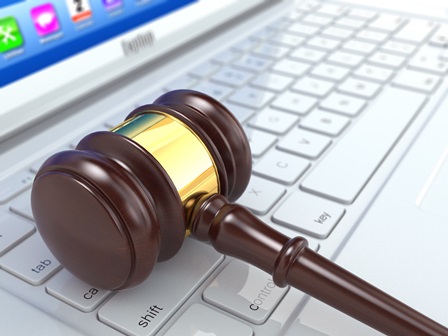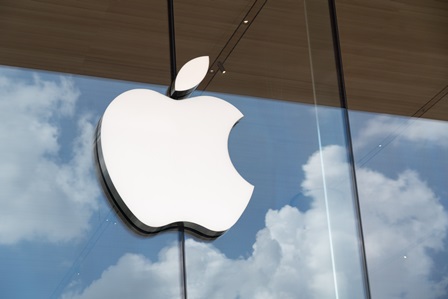Mobile Device Communications Representative Matters
The following descriptions highlight a variety of matters for which Vestige has been retained. Each of these cases are real matters that we have worked, but for privacy and confidentiality purposes the identifiable information has been sanitized. These cases are not the entire population of cases matching such criteria, but instead represent a wide sample of the cases we have worked that are specific to Criminal Cases involving mobile devices/cell tower forensics. Should you need additional information, please contact us.
Criminal Case | Mobile Device Digital Forensics
Vestige was contacted by defense counsel to identify evidence of location information and general activity from a mobile device. Vestige preserved the device and reviewed all activity, such as text messages, photos, calls, and application history. Vestige was able to identify photos taken with the phone were showing the accused at a specific location at the time the photos were taken.
In conjunction with this evidence, Vestige was able to extract Google Location History for the accused’s mobile device, as it was connected to a Google account. Google will record location information if the correct settings are enabled on the account and on the mobile device. Using the extracted location history data, Vestige was able to plot the GPS coordinates of the mobile device, showing its location at various points in time.
While Vestige was not called to testify on the matter, these two pieces of evidence were submitted, along with an expert report of our findings.
Criminal Case | Cell Phone Call Detail Records Forensics
Vestige was contacted by defense to identify location information from the two mobile devices involved in a crime. The two clients accused in the crime were being held in jail for over 33 months. Vestige received the cellular Call Detail Records (CDR) from all parties involved and all of the law enforcement records. The cellphones of the clients and victim were also examined.
After review of the law enforcement records, a timeline of the criminal activity was established. Vestige was able to use the data from the cellphones, law enforcement records and CDRs to prove the crime occurred during a five-minute window. Vestige was also able to show that the clients left the area of the crime, an hour before it occurred. Using the records provided by law enforcement, Vestige was able to show another suspect in the area of the crime, during those five minutes. While Vestige was not called to testify on the matter, the expert report was presented to the prosecution. Both clients were released from jail and charges were dropped. Law enforcement used the expert report to investigate the other suspect.
Mobile Device Forensics | Distracted Driving
Vestige was contacted by an insurance company investigator, to assist with a motor vehicle accident. The Call Detail Records (CDR) and one of the cellphones was collected during the investigation. The cellphone of the driver who crashed into the other car was not collected. The driver no longer had the same cellphone. The 911 records of the incident were also collected, to determine the approximate time of the accident.
While reviewing the CDRs, Vestige was able to see the calls, text message communication and internet data. An examination of driver’s CDR revealed a large amount of data being downloaded onto the cellphone, just prior to the 911 call. The downloading of the data stopped when the 911 call was initiated. The amount of data was consistent with apps that stream movies or watching a video through social media. An expert report was provided to the insurance company to assist with the investigation.
Criminal Case | Tire Theft
Vestige was contacted by a Federal Defense attorney in reference to Interstate Transportation of Stolen Goods. The clients were arrested in a tire theft conspiracy. Tires were stolen in Texas and transported into Mexico and Louisiana. The Call Detail Records (CDR) from the cellphone carriers were collected from all of the parties involved. The discovery and law enforcement records were also collected and examined.
The CDR’s did show our client at the scene of multiple crimes, but it did not show them crossing the state lines of Texas. The other parties involved, did show their cellphones crossing the state lines. Vestige was also able to show that there was limited communication between our clients and the other parties, via the cellphone. When you combined the CDR data, you could see all parties moving together in the same direction, between crime scenes. Vestige did testify in this case. The parties were found guilty due to admitting the crime over a jail phone and threatening a witness.
Criminal Case | Harassment
Vestige was contacted by a company’s board of directors about a sexual harassment claim. The new Director of Human Resources, had filed a claim against the CEO. Sexually inappropriate pictures within an email, were sent to the Director of Human Resources. Vestige collected the email accounts of the parties involved and examined the pictures sent.
The EXIF (Exchangeable Image File Format) data of the pictures was examined. This data contained information on when the picture was taken and what device was used to take the picture. The EXIF data advised that a Samsung cellphone model was used to take the picture (which was not the CEO’s current phone). Vestige asked the CEO if he still had the Samsung cellphone. The CEO advised that he had turned it in to the IT department and received a new phone, a month prior.
IT department issued the CEOs old phone to the Director of Human Resources. Unbeknownst to the CEO and IT, the old cellphone was still connected to the CEO’s email and Google Drive. With consent, Vestige reviewed the CEO’s Google account and obtained the location data of where the picture was sent from. It was determined that the inappropriate email was sent to the Director of Human Resources, from that individual’s house.
The Director of Human Resources had accessed the picture from the CEO’s Google drive and sent herself the email from the CEO’s linked email account. The Director of Human Resources admitted to the act and was fired. The CEO was also fired for having used a company phone to take an inappropriate picture.









